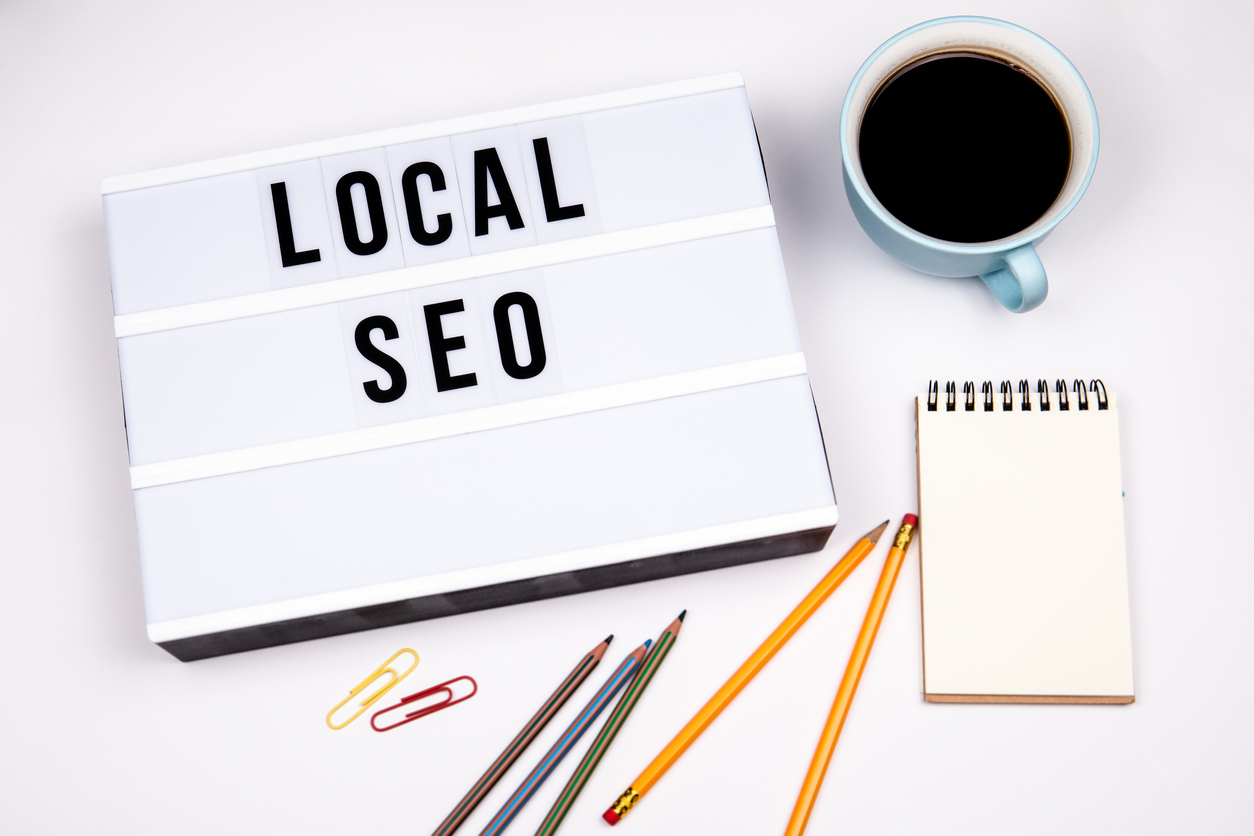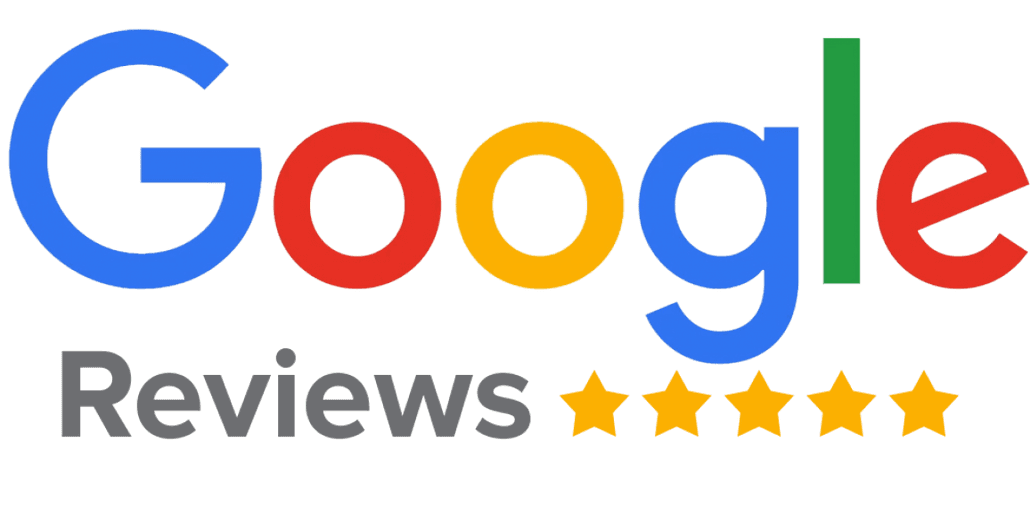Ways To Optimise Your Seo Content Using Keyword Clustering
Without the help of statistical representation, we are aware that the internet contains billions of information spread over one billion websites.
With this, important pieces of information are easily obtained with just a tap on a device. A Google search, for example, will expose an inexhaustible list of web pages relevant to the search query. Usually, people find their answers on the first page of the SERP.
Most web pages derive 75% of their traffic through this process. With these facts, you might want to know how to ensure that your page ends up on the highly coveted first page of the SERP to enjoy massive traffic.
The messiah to this can be summed up in 3 words— Search Engine Optimization (SEO). One of the effective SEO techniques is the use of keywords, and using an SEO expert might come in handy.
Keywords are essential in SEO because they help your page ranking and relevance, thereby increasing web traffic. It is important to know how to cluster keywords effectively while creating SEO content for your webpage.
Before discussing how to use these keywords to your advantage effectively, a definition of SEO and how it operates would give a brief insight.
What Is Search Engine Optimization?
Search Engine Optimization (SEO) is the technique involved in improving a web page to increase its visibility and discoverability by search engines and generate immense traffic through non-paid (organic) search engine results.
When we place a search on a search engine, we are provided with lists of websites ranked from most relevant to the least relevant, and the element that makes a web page the most relevant is nothing but an effective SEO. Although, with the right cash, you can get a high rank (through paid ads).
Google, Youtube, Yahoo, Bing, DuckDuckGo, and Yandex, to mention a few, are search engines, a group of software systems designed to scour the World Wide Web to provide us with information relevant to our search.
Considering the billions of information on the internet, how this is possible must be a wonder to us. It is easy. Search engines operate in 3 main steps: crawling, indexing, and ranking.
First, the search engines deploy bots (known as crawlers or spiders) to crawl through all websites and every link to discover different kinds of content. This is called the discovery process.
On completion, the discovered contents are indexed and stored in a massive database which they can retrieve in the future consequent to a search query. In displaying the Search Engine Result Page (SERP), the search engine ranks the results from most relevant to least relevant.

How To Use Keywords For Effective SEO
Selection of Relevant Keywords
Before considering where your keywords can be used optimally, the first step of the approach should be selecting the right words.
As easy and trivial as it may sound, this is, in fact, the most important aspect of keyword usage. Using keywords unrelated to your content, irrelevant, and with zero search volume will place your work in a different race entirely instead of what you intended.
Therefore, selecting the right words gives you a fighting chance. It usually involves rigorous research, and you have to answer questions like:
– What do you want to be ranked for?
– What does your audience want?
– What do people search for?
– How many people are searching for it?
There are Keyword Research Tools that help to provide keyword analysis. Some include Google Keyword Planner, Google Trends, AnswerThePublic, etc. You have to select three categories of keywords for your content;
– Primary keyword— only one word will be required here because it is the main focus of your content. The title and content must reflect the primary keyword.
– Secondary keywords— several of these words will be required, and they will complement the primary words as words conveying the talking points and variations of the words.
Using Keywords in Meta Description and SEO Title Tag
When a search is carried out, the first thing that your audience gets to see is your meta description and the SEO title tag.
Whatever is contained in both of them becomes what the search engine displays on the result page. Hence, your ability to generate traffic is dependent on what your meta description and SEO title contain. The meta description summarises the page’s content, and the SEO title tag is not necessarily the title of the main article but the title that you wish to be displayed on the result page.
The SEO tag should be a 160-character-description, and the SEO tag should contain 30-60 characters which must succinctly reflect the page’s content.
Use the Keywords in the Article Title
Optimising your content title is essential, as it increases discoverability on the SERPs. You should include these keywords in the first 65 characters of the title to be more effective.
Use the Relevant Keywords evenly throughout the Content
You should include the keywords and variations evenly and naturally while doing this. If the content is bombarded with keywords making readability difficult for readers, the user experience will be negatively affected.
Also, this prevents bots from being able to “crawl” effectively. An effective method of correcting it is by including one primary keyword in every 100 words, which depends on the length of the content.
Use Keywords in Non-textual Content
Relevant keywords in the “alt” attribute for images will increase the visibility of images when related search queries are sent.
Input Keywords in your Page URL
You might be thinking, “would it not be smart to avoid these formalities and input as many keywords as possible?”
Well, these search engines are smarter than we think. Google, for example, is evolving every day and, as such, making improvements to its systems.
Google can see through the excessive stuffing of words, leading to an eventual penalty. In this case, your page may not be indexed nor ranked, and this is certainly something we do not want.
Conclusion
With the rising competition by website owners to be on the first page of SERPs, it is important to know these tips to up your SEO content game.
Keyword clustering is essential if you want to rank higher and enjoy great traffic on your webpage.
However, when you do it wrong, the results could be disastrous due to crawler bots not being able to crawl your site to rank it effectively and readers not reading because the content is not comprehensive.
With this being said, you should know and learn how to use keywords to get the best results from SEO.
Email Marketing Practices Most Brands Overlook
Email marketing has become increasingly popular and is one of the proven ways to get leads and nurture them into paying customers.
However, many brands are culprits for making certain mistakes during their email marketing campaigns. These mistakes might seem insignificant, but they might also hurt your entire email marketing campaign, and you do not want to waste your marketing and local SEO efforts doing something that won’t yield results.
We have created a list of common email marketing mistakes that brands make to guide you. This guide will protect you from making mistakes and improve your email marketing campaigns. Before diving into the guide, let us briefly define what email marketing is all about to give you a proper understanding.
What Is Email Marketing?
Email marketing is a digital marketing strategy that uses emails in a personalised manner to drive a brand’s audience to make a purchase or nurture new leads to the point where they want to patronise the brand.
It is the most effective way of connecting with your leads, nurturing them and turning them into paying customers. It also helps increase the legitimacy of your business as it helps you connect with your customers better.
Email marketing is important for your business because it has a high lead conversion rate with an equally high ROI (about 4400%). This means that it can be a huge gold mine when used properly.
Aside from this, though, it is one of the most effective and private communication channels, and there is no danger of having a suspended account, unlike social media. This means that your leads are yours forever, as long as they don’t unsubscribe. The secret to preventing that is by employing the right email marketing strategies.
Unsubscriptions are the nightmare of any email marketer; however, it is sometimes inevitable. This is why it is important to know how to employ the right strategies to prevent unsubscriptions, maintain your leads and increase them.
Email Marketing Practices Your Brand Should Not Overlook
Ensure your email campaigns are segmented
This is a practice that many brands overlook. However, data gotten from Campaign Monitor affirms that marketers who segment their emails see as much as a 760% increase in revenue!
Segmenting your email campaigns simply means dividing your email lists into groups based on their similarities. For instance, segmenting based on their sales funnel position, location, gender, etc. Let’s say you have an email list with people that are yet to patronise you. You could send them content that will move them farther down the sales funnel, like coupons, promo codes, etc.
This segmentation helps create personalised and relevant emails, which leads to high engagements and conversions.
Make your email content personalised
Spammy, impersonal emails are very annoying, and everyone tries to avoid them as much as possible. When people avoid your emails, it could hurt your email marketing campaign because the conversion rate would be very low.
Personalising your emails is important as it helps create a bond between you and your contacts, potentially leading to more conversions.
You can personalise your content using personalisation tokens when sending emails. These serve as placeholders for the name of the recipient. For example, instead of saying “hello, customer”, you could say “hello, Maria”. Doing this increases the interest of the recipient in opening the mail.
If, however, the email loses relevancy when it is personalised, it is advised to ignore this practice, as relevancy trumps personalisation.
Your email should offer value
Your audience’s interests should always be at the forefront of your mind when preparing email marketing campaigns. Discover their pain points, create content that offers solutions to those problems, and dish out the contents through your emails.
Even if you are not making sales, you should be consistent with it, as people need to know, like, and trust (KLT) your brand before patronising your services. Giving value is one way to hack the KLT process and convert your email leads to paying customers.
Make it easy to unsubscribe
While it’s important to grow your mailing list, it’s also okay if subscribers want to unsubscribe from your mailing list. You should let them go and not make unsubscribing harder for them because it could hurt you. Your emails might be classified as spam, or you might get a high rate of hard bounces (when emails are unopened).
Also, don’t add manipulative copies on the unsubscribe page to trick the customer into staying. Just let them go, and work on getting more leads.
Set a frequency for your emails
Setting a frequency for sending emails is vital for email marketing. The frequency of sending emails differs from business to business depending on what you specialise in. It is important not to send emails too often, as they could be considered spammy. Also, not sending emails often could lead to not being visible or relevant to your audience, and they could forget you.
Finding the right frequency is vital, especially if you’re just starting. Eventually, you can up the frequency, especially if you get a high engagement rate.
Have a content schedule for your email content
A content calendar is essential to help you stay on top of your email marketing game. It helps you stay organised, plan and know what type of content to dish out, and set the frequency for sending.
Every email content calendar is unique to your business, so ensure to plan what works for you and your audience, as they’re your priority.
Pay attention to your visuals (layout and design)
Visuals are essential for email marketing. Bad visuals could make your audience lose interest in your emails, as nobody wants to struggle to read out your content.
Also, ensure that your emails are both desktop and mobile optimised to display cleanly on your recipient’s screen. Additionally, your visual aids (flyers, images, etc.) should all be high resolution and appeal to the recipient.
Avoid spam triggers
MailChimp’s data has shown that certain words trigger spam filters when included in your emails. If a mail ends up in the spam list, it is most likely to end up not being seen by anyone.
To avoid this, take note of the following when writing your email content, especially in the subject line;
– Don’t use all caps when typing the subject line
– Avoid exclamation points
– Use a clean mail list of people who have signed up to receive your emails
– Avoid using exclamation marks
– Be wary of using symbols like $ and %.
– Avoid words like “free”, “percent”, “help”, “apply”, etc.
Making these small changes might positively affect your entire email campaign and ensure that your email goes directly to your recipient’s inbox.
Have a unique signature
Having a unique signature at the end of your email adds to the personalisation needed to stand out to your subscriber.
Aside from just including your name, your email signature is a great way to include more info about your brand to promote it and build trust with your audience. Some interesting things to use as a unique signature include;
– Social media links
– Contact information
– Witty/motivational quotes
– Special offers/promotions
– Website info
These little changes can make a difference in boosting your brand’s visibility and credibility.
Conclusion
Email marketing is one of the most effective forms of marketing in the age of digital marketing. It is also one of the oldest forms of digital marketing, which makes it trusted by many marketers.
A good email marketing campaign needs to follow some of the best email marketing practices to ensure its success. Some of the tips might seem insignificant, but they make a lot of difference in your campaign.
As a business owner, it is essential to pay attention to these details, implement them, constantly review your strategy and make any changes that need to be made. Doing all these ensures easier and more productive marketing campaigns.
Creative Online Advertising That Can Get You The Customers You Want
Online advertising has revolutionised the advertising industry in many ways. Before online adverts became a thing, traditional advert methods like billboards, television, newspapers, etc., were used. Now, online advert methods like social media ads, paid search ads, etc., have replaced them.
With this revolutionisation, small business owners can now compete in the same field as big companies, as long as they can play it right.
Online advertising coupled with effective SEO strategies by professionals is important for businesses these days, and it’s the first place to start when advertising in these modern times. Before diving into the intricacies of online advertising, let’s define it explicitly.
What Is Online Advertising, And Why Does Your Business Need It?
Online advertising is a type of paid marketing that uses internet-based platforms for advertising products/services to users.
This advertising strategy has become increasingly popular. Two out of three small businesses now use it to generate more leads and get more customers.
It is estimated that spending on online advertising will hit $646 billion by 2024. As of 2020, online advertising spending was estimated to be about $378 billion in 2020.
One key advantage of online advertising is that there are metrics you can keep track of. Unlike traditional advertising methods, online advertising methods allow you to keep track of your ads through the different channels where they’re advertised. This gives you access to beneficial data that helps monitor your spending and keep track of ROI. This data also serves as a guide to know better ad campaigns that work, keep track of the better-performing ads, etc.
Aside from keeping track of metrics, online advertising is also cost-effective. Small businesses can get new customers/prospects while spending way less than what you’d spend for a billboard ad.
Online advertising has become the order of the day, especially now that many of the world’s population own a mobile device, thus having access to the internet. As a small business owner, it is a chance to maximise it. Advertising your product and services online gives you a chance to increase your business’s visibility and boost sales.
Types Of Online Advertising
Social media ads
Social media ads have become a huge market for adverts, especially since over half of the world’s population are users of different social media platforms.
About $153 billion is spent on social media adverts annually, though it might grow to $252.6 billion in 2026.
Examples of social media platforms include Facebook (Meta), LinkedIn, Instagram, Twitter, etc. Social media ads are done at a cost, depending on the platform used.
It is advisable to run adverts on social media due to its wide audience that promotes brand awareness when your brand is displayed. Other advantages of social media advertising are cost-effectiveness and crazy targeting reach.
Paid search ads
Paid search ads target searchers who come to different search engines to search for products/services.
They are usually at the top of SERPs and offer a wide targeting reach. Currently, Google has the market with an 85% global market share, though other search engines also offer paid search ad services.
Paid search ads are fantastic because they have a huge reach that guarantees fast traffic and immediate results. However, they can be quite expensive and highly competitive.
Display ads
They’re also a common form of online ads, and these come in many forms; in-content ads, side-bar ads, pop-up ads, etc. Different companies offer these services, e.g., Google and Taboola. Display ads are quite cheap; however, they usually have a low CTR.
How To Create Effective Online Ads
Regardless of the brand or services offered, running ads online usually has a similar process. However, the intent is the same; to boost brand awareness and sales. These tips guide you on what to do when running an online ad.

Set your ad goals
Setting goals helps you have an idea of what you want from your online marketing campaign. They’re also important because they help you keep track of progress and know when something is wrong and how to rectify it.
Besides wanting to make sales, other goals include getting brand awareness, growing social media audience, etc., depending on what you want as a business owner. Ad goals should be realistic and specific. E.g., instead of saying you want to boost sales, you can say you want to boost sales by 10%. This helps you have a clear view of how to achieve the goal through your online ads.
Know your target audience
After setting your goals, knowing your target audience is the next important thing. An advantage of online advertising is that you target your specific audience instead of just advertising to everyone. This reduces the amount spent on targeting audiences that are not yours and helps you focus on your target audience.
Budgeting
Budgeting is essential because it helps you determine how much is right to spend on your ads. There are usually some considerations to make when budgeting for your ads. Some of them include;
– Overall marketing budget
– Prices of products/services
– Goals
– Previous results
– Duration of the ads
It is essential to budget accurately because depending on the results obtained from the current one, you might have to increase the budget a bit to get more from it.
Pick a channel
After ascertaining the above factors, picking out your online ad channel is the next thing to do. This might be a bit tricky, seeing as so many platforms offer ad services out there.
You might already have one in mind, but you need to know if it’s the right pick. You can’t be advertising on Twitter if most of your audience is on Instagram. Another thing is that the platform you’re choosing has to be budget-friendly, depending on your budget.
Overall, stick to one channel for your first online ad campaign. Once you’ve gotten the hang of it, you can branch out.
Set up your ads and start the campaign
Depending on the method used, whether display or text-format ads, most work happens here to ensure the best ad experience. Writing a compelling ad copy is essential if you’re using a written format. If using display format, then using a high-resolution image is essential.
The bottom line is that your ads have to be of high quality to appeal to people and increase their interest in your brand.
Make your campaign optimised
Creating your ad campaigns gives you insight and a load of data, which you can optimise to your advantage.
Reviewing your ads every day is ideal for keeping track of changes or ways to improve them. You can also know if the ads didn’t work, change the campaign, or find another suitable ads channel.
Conclusion
Running ads is essential for every business, and online advertising has made things easier for everyone.
Keep in mind that your ads should be top-notch because when it’s not done well, it leads to a waste of resources which is detrimental to your business.
It is also important to take note of the channel used, monitor progress and make changes where necessary to get the best out of your ads.
Online adverts have become the lifeblood of every business that wishes to be more visible to their target audience, thus knowing how to manipulate it is best for you as a business owner because it encourages scaling, visibility and more sales.
Awesome Local Seo Tips For Small Businesses
Statistics show that 46% of Google searches seek information within their vicinity. If your business isn’t well optimised online, you could be missing out on potential clients who want to patronise the business.
Local SEO is essential, especially if you aim for longevity in your business. Since it’s essential, it is important to know how to apply the techniques to see desired results.
If you don’t know how to optimise your business using local SEO or simply need more tips to improve your existing SEO strategy, we have curated some vital tips to guide you in doing this. This guide will help you better understand how to optimise your business to reach your potential clients interested in your products.
What Is Local SEO, And How Does It Work?
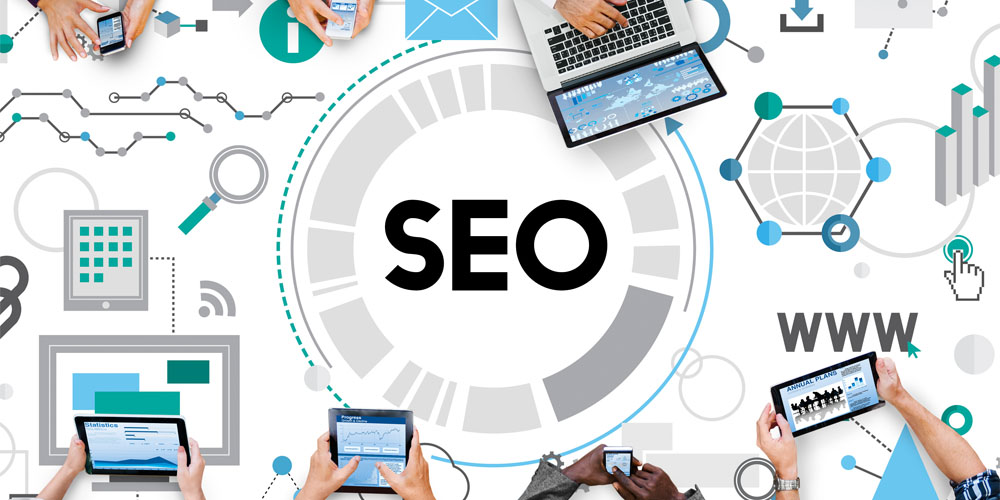
Local SEO simply means improving the search engine visibility and optimising the online presence of your business to get organic customers within your locality.
Doing this helps you become more visible to your potential customers when they make relevant searches.
Search engines mostly use business information like social media pages, links, local content, etc., to provide accurate results to the users when they input related keywords. They (the search engines) also use users’ geolocation by tracking their IP addresses. Doing all these things ensures that the best and most relevant results are provided when users make their search.
For example, if a user searches for a product/service and location, e.g. “doughnuts in Birmingham”, the search engine results will show relevant doughnut shops in the Birmingham area.
However, suppose you just search for just the product without including the location, e.g. “doughnuts”. The search results will assume that the search is for local purposes and still show relevant doughnut shops in your particular location by tracking your IP address and geolocation to get your specific location.
Local SEO is very beneficial for your business. Studies show that the tendency to search for a product online before buying has increased. About 4 in 5 consumers search locally for a product online, and this information sends about 70% of consumers to a physical store.
With these results, you can see that local SEO is essential, as it improves your business visibility and serves as a cost-effective marketing solution. Asides from this, it generates huge traffic for your business through searches, and you tend to reach customers within your location that are ready to buy your product. When your products are within reach of its consumers, chances of buying are high.
An additional advantage is that you don’t have to waste your time with customers far away from your location and have a low chance of patronising you.
Difference Between SEO and Local SEO
SEO generally means optimising your online presence to be easily visible on search engines. However, local SEO specialises in making you relevant to searchers within your locality.
In simpler terms, organic or traditional SEO ensures that your site is visible globally and doesn’t have any business with your location. In contrast, local SEO uses your location to connect you to searchers within your area.
As much as they have differences, they also complement each other in several ways, and both can have positive impacts on the other.
For instance, when you upload your business details on Google My Business or other local listing directories, you’re helping local search engines determine where you are. Simultaneously, you’re also adding a link back to your website, thus adding to your site’s backlink count. Search engines take this backlink count and rank your website higher on search results.
Another way local and organic SEO complement each other is when you upload locally-focused blog content. Doing this helps you rank higher on SERPs while also increasing your potential to reach locally-based searchers.
If these optimisations are not done correctly, they can hurt your marketing efforts, so paying close attention to them is essential to get the best results.
Additionally, adding accurate information like location, opening/closing hours, services provided, etc., make it easier for searchers and increases your chances of getting more customers.
Tips For Optimising Your Small Business Using Local SEO
Set up/optimise your Google My Business account
Google My Business has undeniably become a vital tool for business owners, as it provides necessary information about your business that searchers need. To set up your Google My Business, do this;
– Create and verify your Google My Business page
– Use Google Posts in your account
– Ask for customer reviews on the page
– Respond to customers’ reviews politely
Doing this is essential because Google can authenticate your business as legit and give you the honour of having a sidebar space on Google local search, highly coveted by businesses.
Aside from updating your information for SEO purposes, it also helps in giving potential customers a deeper insight into what your business is all about and can boost chances of patronage.
Link your social media to Google My Business
Google values shared social media content, so after setting up your My Business profile, make sure to interlink your My Business page and social media profiles to each other. Doing this helps to improve visibility both on SEO and social media.
Keep your business information consistent and updated
Business information like names, phone numbers(with area codes) and addresses should be consistent and written out in HTML text to make it crawlable by search engines.
Also, having accurate updates makes your business visible. Even as little as a typo error or wrong address/number could be problematic. Google will not display these details in the search results if they cannot verify that you’re authentic.
Run a local SEO audit
SEO is a continuous process, and as tempting as it is to stop once you start seeing results, you shouldn’t. Instead of stopping or changing strategies, it is important to run an audit to see how your website performs and what changes you should make to achieve your goals.
Here’s a guide for local SEO audits:
– Google My Business — to know how your business appears in SERPs and how accurate the information displayed is.
– Google Search Console— to know how crawlable your site is and if any errors make indexing ineffective.
– On-page SEO— to know if your site has all the features that enable higher ranking.
– Citation— to ensure the correctness of all information displayed.
– Competitor analysis— to know how you match your fellow competitors and note the necessary holes to fill if you don’t.
– Website— to check the overall function of the website.
Upgrade your internal linking strategy
External links are quite ideal; however, internal links help rank and navigate your site better. It is important to have an internal linking strategy to rank higher and ensure maximum visibility of all content on your page.
Optimise content, URLs, meta descriptions, etc.
Whenever you want to put out content on your website, ensure that the content is optimised for search engines by adding high-volume keywords in the URLs, title, meta description, etc. Doing this gives you a higher opportunity of being found on the SERPs.
Include location pages on your website
If you have one or more physical locations, you need to do this. Location pages contain all the essential information needed for your business in a particular geographical location. Information like addresses, phone numbers, opening/closing hours, reviews, etc., are included on the location page.
Avoid copying content across different location pages to avoid confusion. For a business with one location, it is ideal for creating an “About Us” page that is locally descriptive. You also gain a bonus if you add Google Maps on your location page, as it’ll help potential customers find you more easily.
Create more localised content
Writing about general content might be more beneficial regarding traffic generation, but creating specific content for your particular region is also important. It helps you be the local authority in your industry, thus attracting more customers.
Make sure your website is mobile optimised
The searches on mobile devices have increased (about 61%). Having a mobile-friendly website makes it easier for users to find your business and navigate it.
Obtain relevant inbound links
Inbound links prove your legitimacy and can help you rank higher on local SEO. You can get them by hosting community events, partnering with influencers, guest blogging, providing resources, etc., helping you gain more traffic through inbound links, social media growth and reposts on social media.
Being an active participant in your local community
Participating in local community events is a sure-fire way of getting more buzz around your business. Partnering with NGOs for charity outreaches, hosting events, scholarships within your industry, etc., are great ways of participating in your local community events. More people get to know about you when you do this, and you feel good too!
Conclusion
Local SEO is vital for your business, and it works together with organic SEO to ensure that your website stays high in ranking and continues getting traffic. Asides from that, it is essential to prove your business’s legitimacy and attract more customers to you.
When creating a local SEO strategy, it is vital to pay attention, as it may be fatal to your business when done wrongly. The tips provided are sure to help improve your local SEO, and also make sure to carry out periodic local SEO audits to ensure that you’re on the right track.
All About Marketing Automation
Marketing is one broad industry that has seen a massive increase with the advancement of technology. As marketing becomes wider and grows more complex, the need for simplicity and ease increases— this is where automation comes in.
As the name implies, marketing automation uses technology to make marketing campaigns easier to run and track their progress. It has become important for marketing to be automated, seeing as there are many things to keep up with concerning marketing.
Having your marketing automated helps you stay on top of your marketing campaigns, giving your customers the best value and helping you know what to change/correct in your existing business model/marketing campaigns, using accurate data tracking and recording to make informed and accurate decisions.
Alternatively, you can check out SEO courses on Clickslice to have a better understanding of how this works.
Marketing automation won’t be complete without certain tools (software) that make it possible. These tools help marketers navigate the best on how to market to their audience, give them insight, track/store data, manage their marketing campaigns automatically and respond to certain queries automatically. This gives business owners/marketers the time to implement more and grow their businesses.
Knowing the right marketing automation tools to use is important to get the best results. These tools make marketing easier and double as CRM tools that give you the best value, improve customer service, and do more for your business to help it scale.
We have created a list of marketing automation tools reviewed highly by successful marketers to help you drive the best results for your business.
Effective Tools For Marketing Automation

Hubspot
Hubspot takes the top spot here because it has been praised by highly successful digital marketers to be a very effective tool both in marketing automation and CRM.
They have a fully-equipped suite for marketers that includes sales software, support software and marketing software— all of which are integrated with their CRM software. This combination makes it possible for companies to have insane marketing productivity and a data catalogue that would not be possible if the marketing operations were done separately.
Once you get the hang of it, the possibilities are endless, which means that using it to automate many tasks helps you save time.
Omnisend
Omnisend is a marketing automation platform created for e-commerce businesses.
This software tool offers automation workflows that integrate email, SMS, Facebook Messenger, etc. Omnisend also offers an easy UX that makes it possible to create workflows and do different tasks. Businesses also get to enjoy great channel management features, depending on the size of the business.
Autopilot
Having a beautiful UI gives a pleasant experience when using Autopilot. Their marketing platform is mainly for messaging, and they pride themselves on being the easiest marketing automation platform to use.
They do email, messaging and other automation, but you can also create/send autoresponders.
Moosend
Moosend caters to majorly e-commerce and SaaS companies.
They offer a high tech software automation tool that enables you to track your website, get customers’ preferences, and create and send the right emails to the customers based on their preferences.
Having this data handy makes it possible to carry out decisions backed by data, thus making better decisions and giving customers better product recommendations. Another commendable thing about Moosend is that they offer free subscription packages for up to 1000 subscribers.
EngageBay
EngageBay offers a marketing automation tool that integrates email marketing, social media marketing, website chat, etc., for a comprehensive marketing campaign.
They also offer autoresponder services, SMS, abandoned cart reminders, etc., which gives SMEs more value and helps them serve their customers better.
Pardot
Pardot is one of the software in the Salesforce suite that offers you a wide range of automation services, ranging from automated communication, CRM, email marketing, lead nurturing, etc. One of their unique features is that they offer ROI reporting to make sure that your campaign is on track and enable you to make changes if it is not. They also offer website tracking to get more data for you, which improves your marketing results and reduces time and effort.
GetResponse
GetResponse offers you automation services for email marketing, landing pages, CRM, and other features. It is typically easy to use, though unlocking some features like complicated conditional logic and marketing automation might make it more complex.
ActiveCampaign
ActiveCampaign offers email marketing, marketing automation and CRM services.
While the software might be a bit technical to use, especially for those with low technical capabilities, it offers massive results when you get the hang of it. They have a very dynamic marketing automation technology, and their deliverability is top-notch.
InfusionSoft (Keap)
This is one of the oldest marketing automation software with top-notch services. Their tools give marketers the best results and help them keep track of important customer data to help them make better decisions and create better campaigns.
Drip
Drip offers a flexible marketing automation software that, according to them, “helps you put pretty much any marketing strategy in motion”. They target mainly e-commerce companies, and while their forte is email marketing, they also offer multi-channel marketing and other automation workflows.
Drip helps you keep track of customer data and personalisation, making it an ideal marketing automation tool for most e-commerce businesses.
Conclusion
The marketing industry has grown massively, and as such, marketing automation has become essential.
There is an increasing demand for tools for marketing automation to help marketers and business owners drive the highly coveted results they need for their marketing.
These marketing automation tools listed not only execute flawlessly but have also been praised by top marketers and used by many companies globally.
It is essential to learn the technicalities of using them to make your marketing campaigns easier and provide you with more data to help improve your campaigns too.
While some may be initially difficult to use, they provide high value and results for the money and effort put into them. So, if you want your business to scale, you might be better off employing the services of a marketing automation tool to help you drive the results you need.





